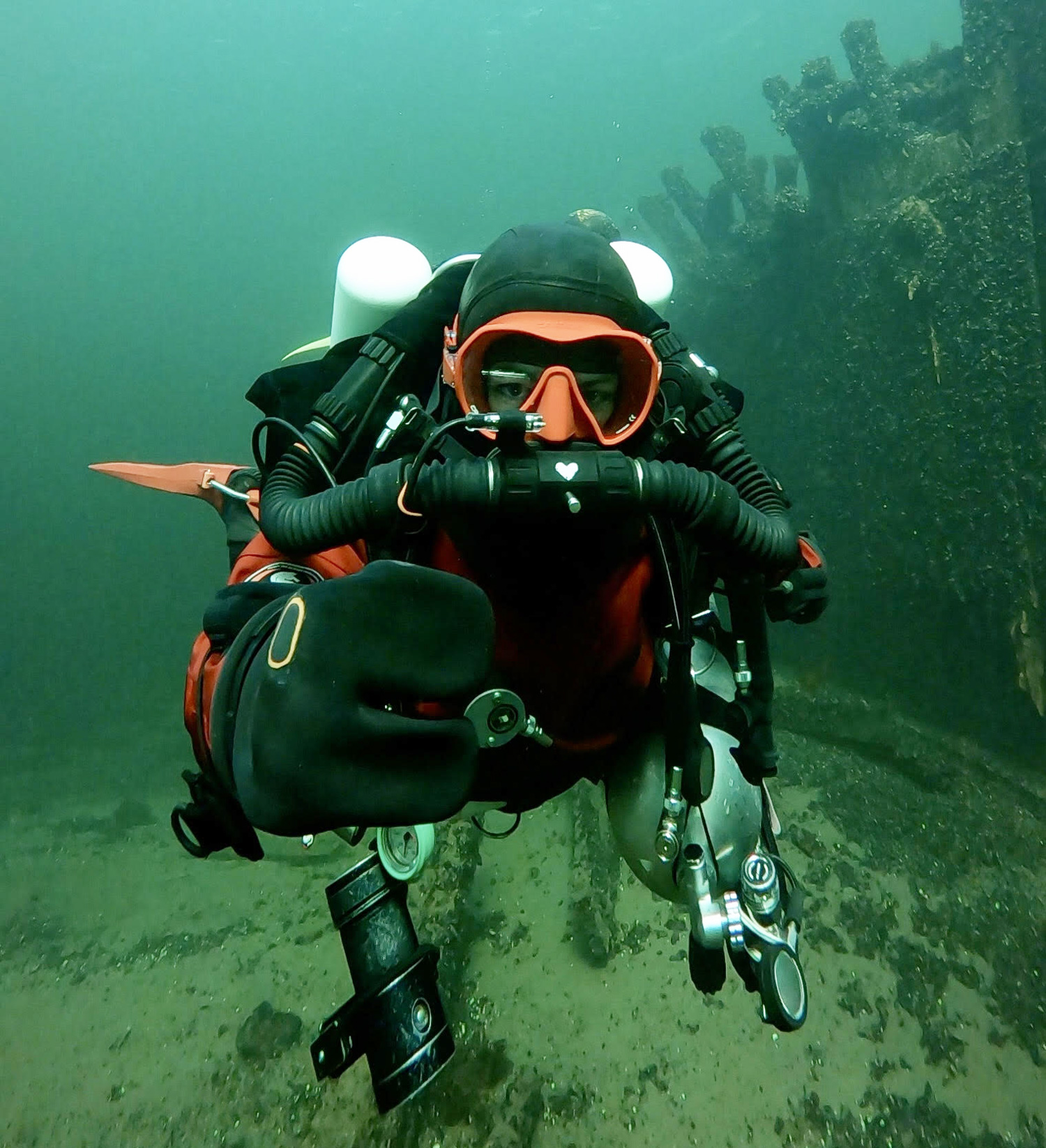Diving inspiration
Four Tips For Staying Warm While Cold Water Diving
You might have seen photos of those clear waters with those preserved wrecks and or unique wildlife native to colder temperatures. It might seem like an arduous task to dive in sub 10º C water, but it's worth it!
When preparing for diving in sub 10º C water there are certain things that are given; drysuits, thicker wet hoods, dry hoods, drysuit gloves and even electrical heating, as well as the use of rebreathers. Sure, the equipment is a big part of it. Keeping dry is a good start. However, I want to share some further tips for cold water diving that I have learned over the years that help me stay warm that are not necessarily connected to your equipment.
Learn how to feel cold
This might sound odd, but I'll explain. The best source of warmth while you dive is the body heat that you generate. The best way to generate heat is to maintain a higher level of work, not to the point of fatigue, but moving is better than hovering and staying still. On the surface, it is better to keep the body cooler, so it is in a state of heating up. If you start overheating and sweating on the surface, the body starts to cool down, and you want the body to generate heat.
While I dive, I always feel cool, but seldom freezing. Get used to, and train yourself to be able to differentiate the feeling of being cool and freezing. This is important. Feeling cool is good, but freezing to the point that you start to lose sensation in your arms and feet is bad. We want to avoid freezing and hypothermia. When we start to freeze, it’s time to call the dive and make our way back up or home. The good news is that the body is good at adapting to cold, and you can train to increase your cold tolerance. It's a matter of time and tenacity.

Eat properly before and after dives
While eating properly sounds like a given, people underestimate how much your food intake affects your cold water dives. It takes the body a lot of energy to generate heat in colder waters, especially at 0º-6ºC. Eating a proper breakfast, lunch and dinner consisting of a lot of fat and carbohydrates help supply the body with the energy it needs; it’s even better if the food is warm! Hydrating often is also good, and a hot, salty broth is fantastic after you finish a cold dive!
It puts the lotion on the skin…
Well, kind off. The parts we expose to the cold water directly will feel the slap of coldness when we descend. The brain freeze, while intense in the beginning, will pass and some parts of the face will go numb. This is normal. But it does take a toll on the skin, and especially the lips when doing repetitive dives. The cold dries out the skin very fast. So don’t hesitate to slather on lotion that is super fatty on the cheeks and lips before and after the dives. The fatter, the better.

Air is your friend
For some, the notion of having a lot of air in the dry suit is usually not very inviting. It's not uncommon to see people asking about undergarments that are not so fluffy. These same people often don’t want too much air in the drysuit. TOUGH LUCK. Air is exactly what you need—that’s the whole principle of the drysuit, and the fluffier, the better. Your body will heat the air; the proper undergarments will capture it and the drysuit forms the final layer between you and the cold water. You want the air to be able to travel freely from the tip of your fingers to the tip of your toes, so having tight boots, gloves or a drysuit is not recommended. For example, there is a huge difference in warmth using three-finger gloves or even thumb gloves compared to a five-finger drysuit glove. When I dive, I have three layers of undergarment gloves inside my three-finger glove.

In the end, you will find a configuration and dive style that suits you. For me, after significant testing, I have found a set up and dive style that allows me to do two-hour dives in +2º C water without electrical heating. Am I finished? No, I’m still optimising my configuration and procedures. But we all must start somewhere, and cold water diving offers amazing sites and fantastic things to see! So, the best way to become used to the cold, is to start diving in it.
If you want more tips and tricks, don’t be a stranger! Good luck in your cold water adventures!
Scientific links about cold adjustments and energy:
- Human responses to cold
- Temperature homeostatis and work efficiency in the cold
- Performance and energy expenditure in cold environments
About the author
Sara Banderby started diving when she was 15 in the warm waters of Mexico. Then traveling home to Sweden she embarked on a journey to master the cold waters, and to teach others that if you put in the effort, magical things await under the cold surface. Now 15 years later, she explores mines, caves, wrecks, and no temperature can stop her. She works as an open water instructor in Stockholm all year round and travels to cold water destinations to keep experiencing the wonders that cold water diving offers. Together with Joanna from the UK and Sanne from Belgium, she is one third of the Cavettes.


